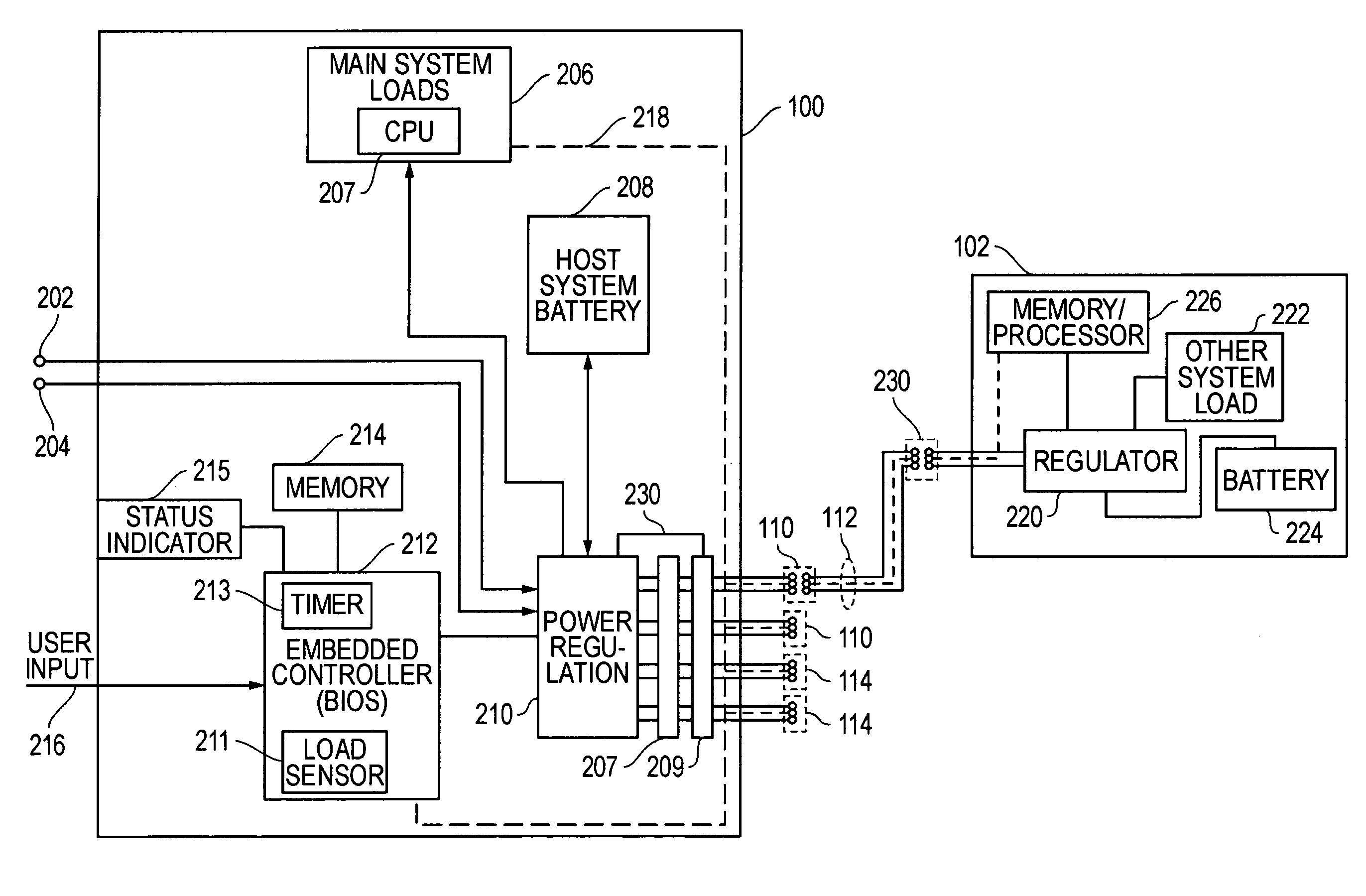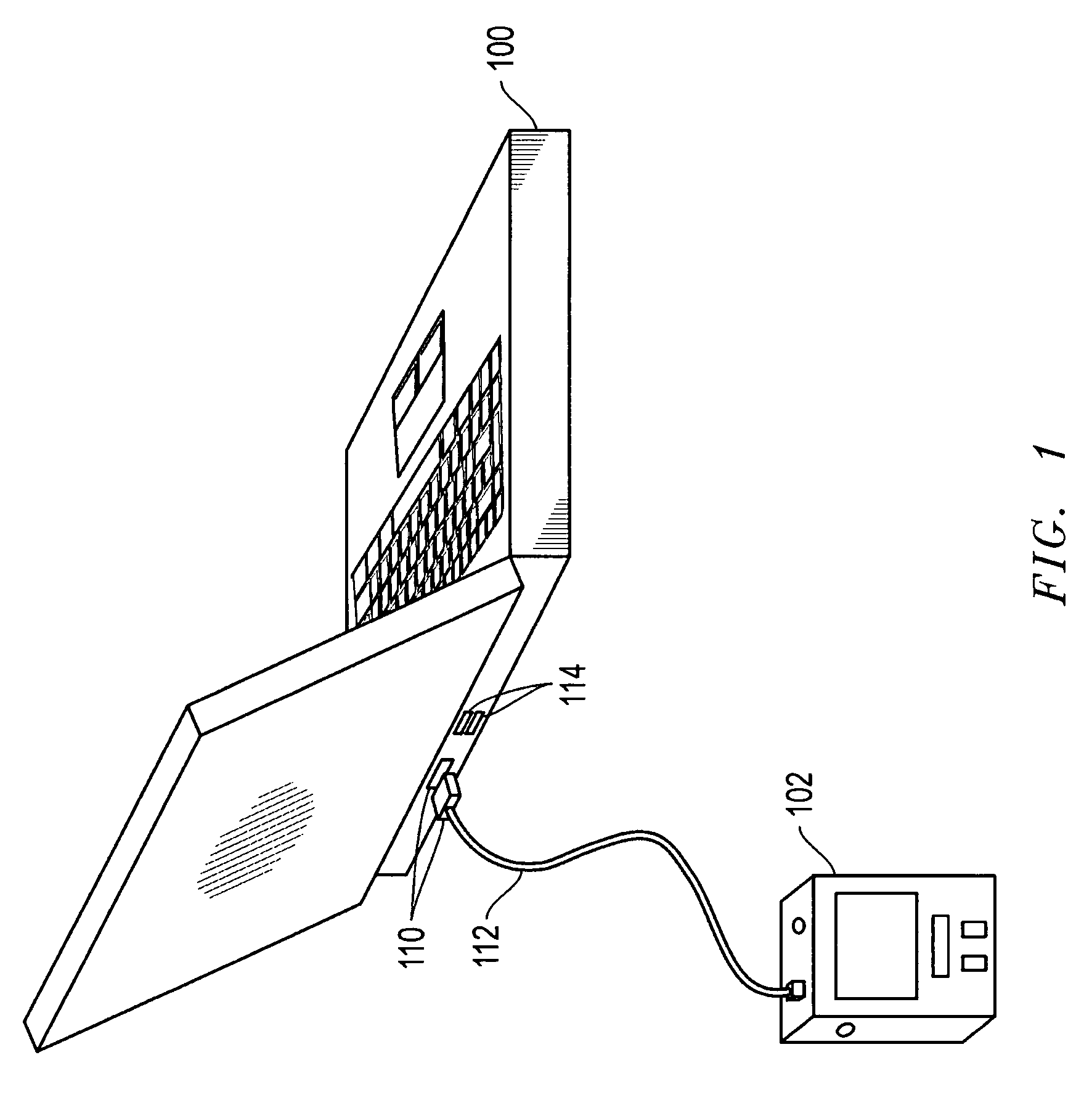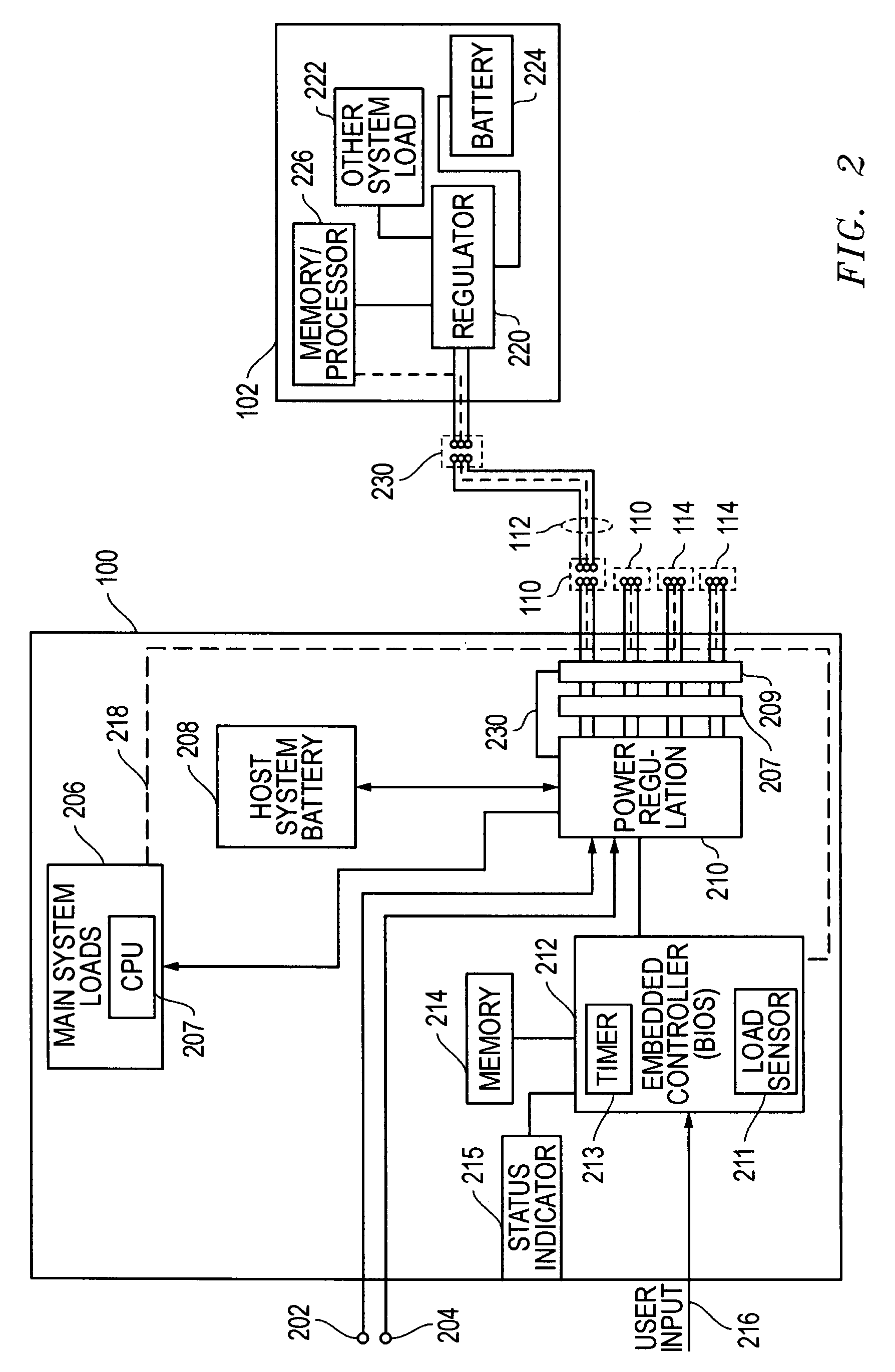Systems and methods for power management
a power management and system technology, applied in the field of power management, can solve the problems of limited power available to external devices, achieve the effects of reducing power drawn, increasing internal battery capacity, and enhancing power savings
- Summary
- Abstract
- Description
- Claims
- Application Information
AI Technical Summary
Benefits of technology
Problems solved by technology
Method used
Image
Examples
Embodiment Construction
[0020]FIG. 1 shows a host information handling system 100 that is configured in this exemplary embodiment as a notebook computer. As shown in FIG. 1, host information handling system 100 is configured with multiple external serial bus interface ports 110 and 114 that each includes data transmission pins and power transmission pins. In the illustrated embodiment, two USB 2.0 interface ports 110 and two Firewire interface ports 114 are shown provided, although any other number and / or types of such interface ports may be present in other embodiments. As further shown in FIG. 1, a battery-powered external device 102 in the form of a portable music player is shown coupled to one USB 2.0 interface port 110 via USB connector cable 112 for exchange of data with information handling system 100, and for transfer of power from information handling system to external device 102 for purposes of battery charging and / or powering circuitry within external device 102.
[0021]Although FIG. 1 illustrate...
PUM
 Login to View More
Login to View More Abstract
Description
Claims
Application Information
 Login to View More
Login to View More - R&D
- Intellectual Property
- Life Sciences
- Materials
- Tech Scout
- Unparalleled Data Quality
- Higher Quality Content
- 60% Fewer Hallucinations
Browse by: Latest US Patents, China's latest patents, Technical Efficacy Thesaurus, Application Domain, Technology Topic, Popular Technical Reports.
© 2025 PatSnap. All rights reserved.Legal|Privacy policy|Modern Slavery Act Transparency Statement|Sitemap|About US| Contact US: help@patsnap.com



